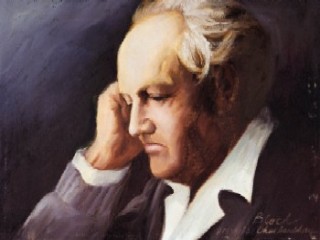
Ernest Bloch biography
Date of birth : 1880-07-24
Date of death : 1959-07-15
Birthplace : Geneva, Switzerland
Nationality : Swiss
Category : Famous Figures
Last modified : 2011-04-12
Credited as : Composer, and teacher, Guido Pannain
The Swiss-born American composer and teacher Ernest Bloch was noted for orchestral and chamber music of highly individual style. He directed two music conservatories in the United States.
Ernest Bloch was born in Geneva on July 24, 1880. Showing musical gifts at an early age, he studied violin with Louis Rey and theory with Emile Jacques-Dalcroze. In 1897 Bloch went to Brussels, where he studied violin with Eugene Ysaye, and then to Frankfurt, studying composition with Iwan Knorr.
Bloch composed his first important work, the Symphony in C-sharp Minor, at the age of 21. In 1904, after having written some songs and a symphonic work, Hiver Printemps, he began to work on his opera, Macbeth, with a libretto by Edmond Fleg, and it was premiered in Paris in 1910. Bloch became a professor at the Geneva Conservatory in 1911. Among his pupils was the conductor Ernest Ansermet.
The compositions Bloch wrote between 1912 and 1916—Three Jewish Poems; settings of Psalms 137, 114, and 22; Schelomo; Israel; and String Quartet No. 1—when premiered during his first visit to the United States in 1917, brought him spectacular recognition. He soon settled in New York City with his family, teaching and lecturing. Among his pupils were Roger Sessions, George Antheil, Douglas Moore, Quincy Porter, Randall Thompson, Frederick Jacobi, Herbert Elwell, and Leon Kirchner.
In 1919 Bloch won the Coolidge Prize (Suite for Viola and Piano), in 1926 the Carolyn Beebe Prize (Four Episodes for Chamber Orchestra), in 1928 the Musical America Prize (an orchestral rhapsody, America), and in 1930 the Victor Prize (Helvetia).
As director of the Cleveland Institute of Music and the San Francisco Conservatory of Music (1920-1930), Bloch made a strong impact. He continued to compose works, such as the Concerto Grosso No. 1, which are tonal, classical in form, and conservatively modern. Bloch vitalized the atmosphere with his enthusiasm, informality, and rather stubborn opinions.
After 1930 Bloch returned to Europe to live, where he composed a sacred service, a piano sonata, a violin concerto, and some large orchestral works. The events leading to World War II affected him deeply, and he stopped composing for some time.
On his return to America, Bloch and his wife, Marguerite, settled in Agate Beach, Ore. He gave master courses for several summers at the University of California at Berkeley and became professor emeritus in 1952. Many of the 25 works he wrote during his final years are considered his peak achievements. They include four String Quartets, Symphony in E-flat, Sinfonia Breve, Piano Quintet No. 11, works for trombone, trumpet, and flute with orchestra, and several suites for unaccompanied stringed instruments.
In 1958, after a long illness, Bloch submitted to surgery; on July 15, 1959, he died. He had received many honors, medals, and honorary degrees, but he always remained unworldly, preferring the solitude of nature to the social life of big cities.
General works which discuss Bloch's music include Guido Pannain, Modern Composers (1932; trans. 1932); John Tasker Howard, Our Contemporary Composers: American Music in the Twentieth Century (1941); David Ewen, The Book of Modern Composers (1942; 3d ed. rev. and enlarged 1961) and The World of Twentieth-Century Music (1968); Joseph Machlis, Introduction to Contemporary Music (1961); and Otto Deri, Exploring Twentieth-Century Music (1968).
















